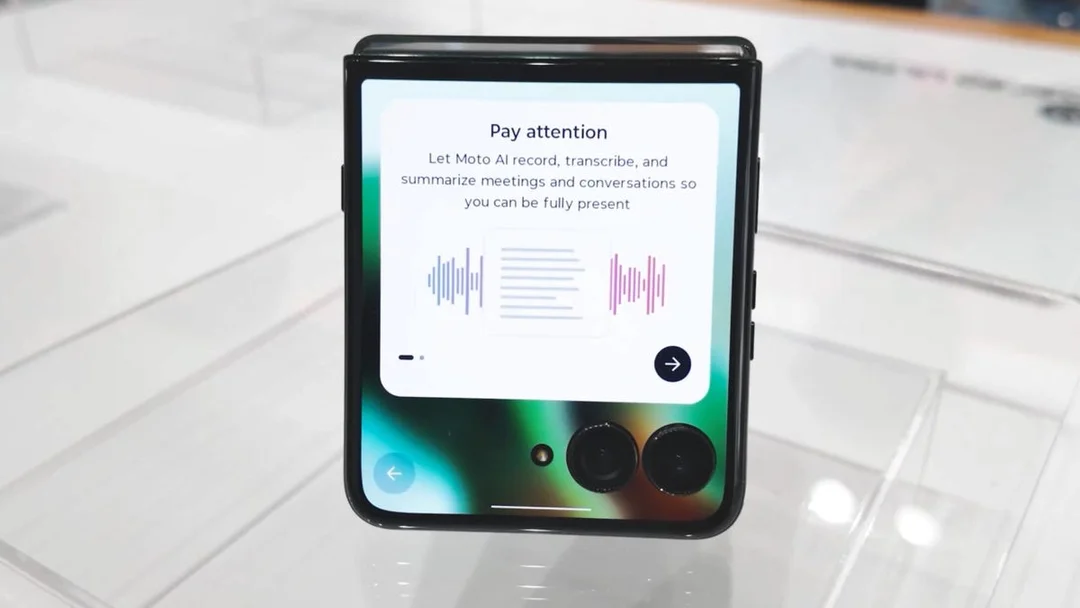
Motorola’s Bold AI Strategy: Razr Embraces a Multi-AI Future, Challenging Google & Samsung
Motorola is shaking up the smartphone AI landscape with its new 2025 Razr lineup, taking a distinctly different approach than competitors like Samsung and Google. Instead of relying solely on its own AI, Motorola's new Razr phones are embracing a "Swiss Army Knife" approach, integrating AI from multiple partners, including Perplexity, Meta, Microsoft, and Google. This bold move positions the Razr as potentially the most flexible AI phone on the market, offering users a diverse range of AI tools within a single device.
The integration of multiple AI services is a key differentiator. While other phone makers might partner with one or two AI providers (like Apple's integration of ChatGPT), Motorola is going all-in, offering users access to a suite of AI capabilities. This includes Perplexity for research and information retrieval, Meta's Llama AI for summarizing notifications, Microsoft Copilot for general queries, and Google Gemini for smart home controls and more. The Motorola Razr Ultra will be the highest-end phone spotlighting Moto AI.

Allison Yi, Motorola's North American Product Portfolio lead, emphasized that this approach is intentional, designed to complement Android's existing AI features while giving customers fast access to their preferred AI engine. Instead of asking users to switch between multiple apps, Motorola aims to seamlessly embed these services into specific functions.
One compelling example is the "Next Move" feature, powered by Perplexity AI. Imagine browsing Pinterest for birthday party ideas; the Razr's Next Move feature might suggest generating an image for a party invitation. This proactive integration aims to streamline tasks and save users time, a concept Motorola previously demonstrated at Lenovo Tech World. According to Perplexity CEO Aravind Srinivas, Perplexity's services will even run when the Razr is shut.
However, this multi-AI approach isn't without potential challenges. As one CNET editor noted, some users might find the sheer number of AI options overwhelming. Motorola's strategy of embedding these services into specific functions seeks to mitigate this issue, but the success of this approach will depend on how seamlessly the AI integrations are implemented.
Interestingly, the decision to partner with Perplexity may have been influenced by Google's own actions. According to testimony in the Google antitrust trial, Google allegedly blocked Motorola from setting Perplexity AI as the default assistant on its new devices. This potential conflict highlights the complexities of the AI landscape and the competitive pressures at play.
Key Features of Moto AI:
- Perplexity AI: Integrated for research, information retrieval, and the "Next Move" feature.
- Meta's Llama AI: Summarizes notifications with the “Catch Me Up” feature to provide essential data quickly.
- Microsoft Copilot: Accessible for general queries via the Moto AI button.
- Google Gemini: Launched by pressing and holding the power button, potentially replacing Google Assistant for smart home controls.
Motorola is also enhancing its camera capabilities with AI-powered features like the Photo Enhancement Engine for low-light photography and Signature Style for customizing the look and feel of photos. Mauricio Moises, Motorola's senior product manager of camera, highlighted the speed and efficiency of these AI-driven enhancements.
The success of Motorola's ambitious AI strategy remains to be seen. Will consumers embrace the flexibility of a multi-AI phone, or will they find the multitude of options overwhelming? Only time will tell if Motorola's "Swiss Army Knife" approach to AI will resonate with users and give the Razr a competitive edge in the crowded smartphone market. What AI features are you most excited to see on smartphones? Leave your thoughts in the comments below!